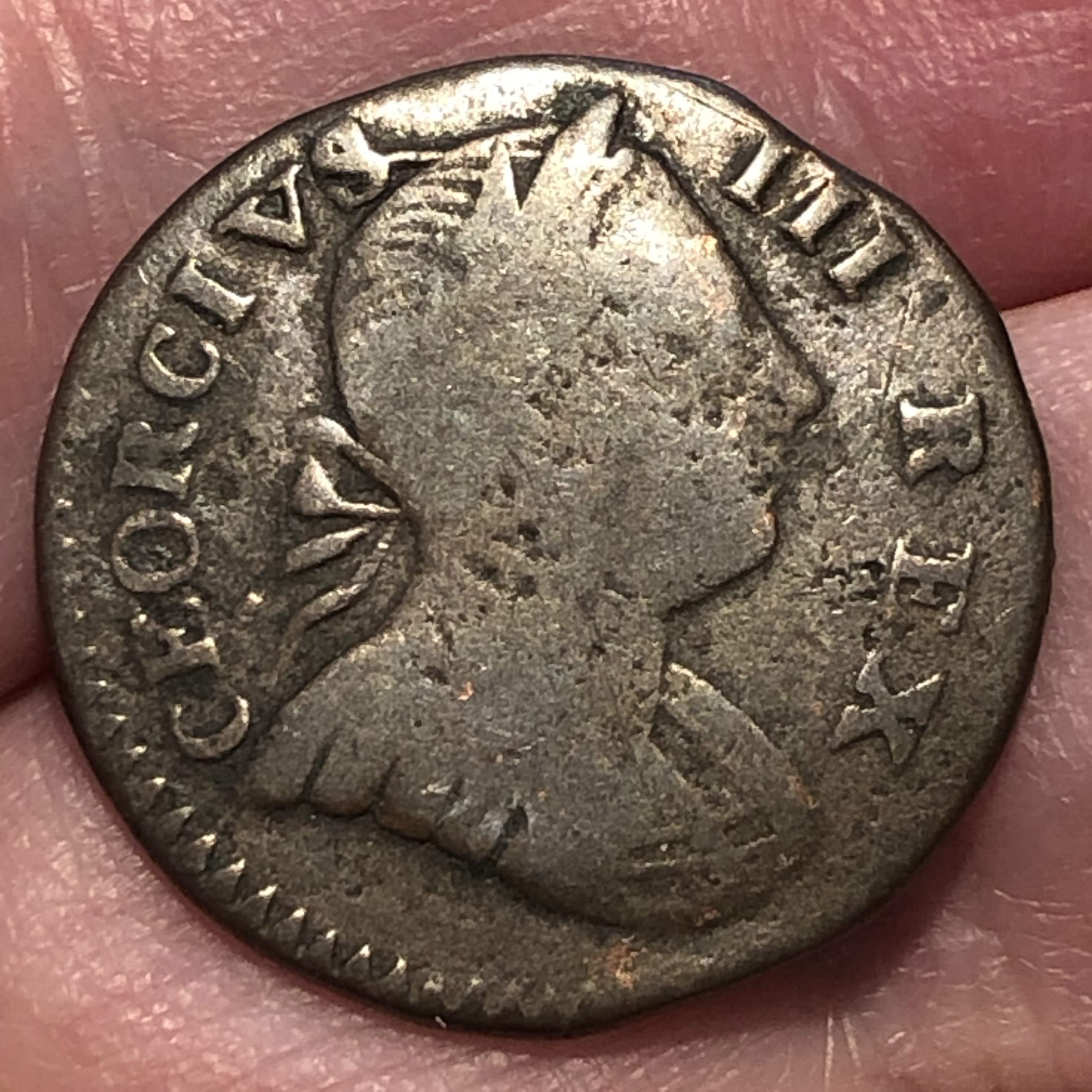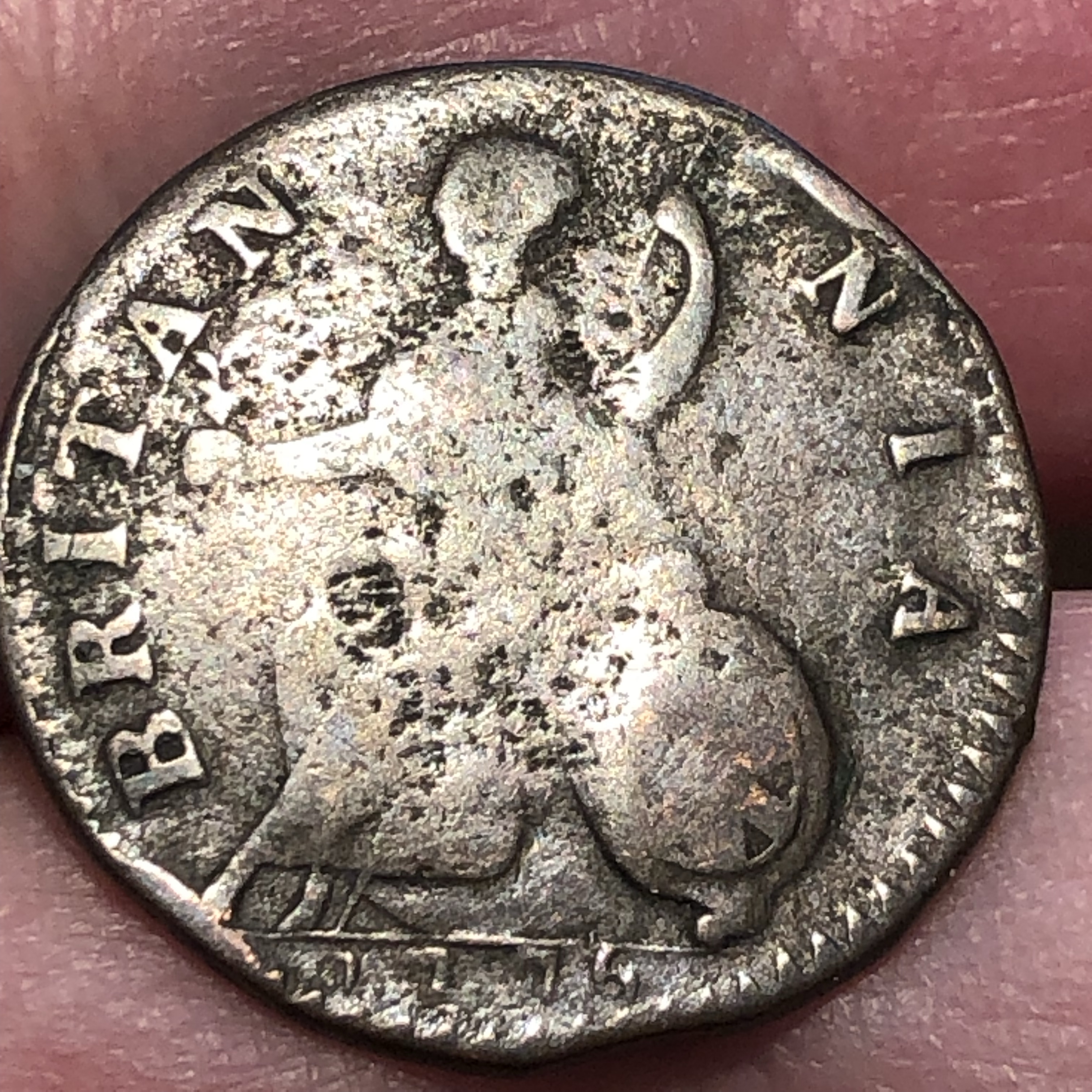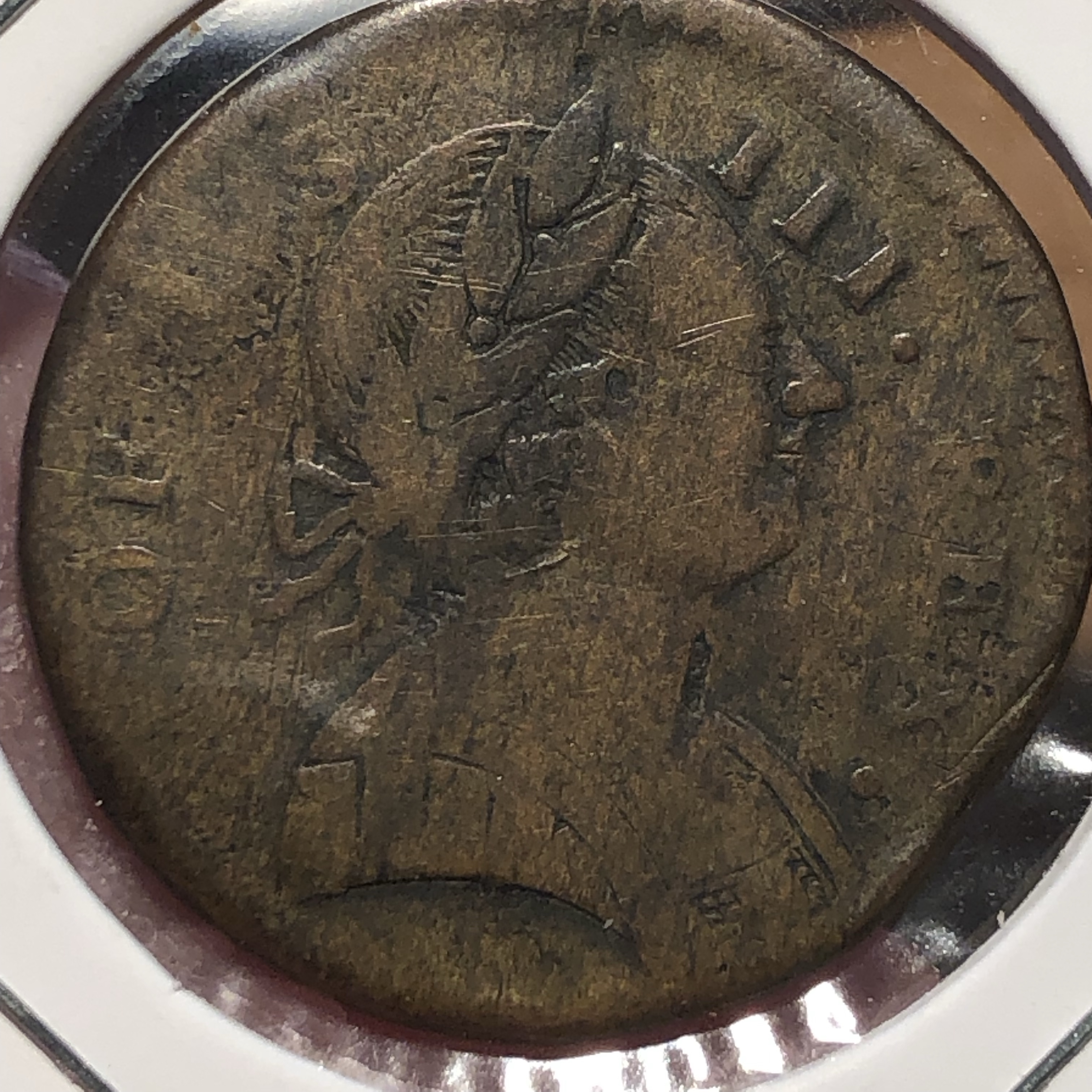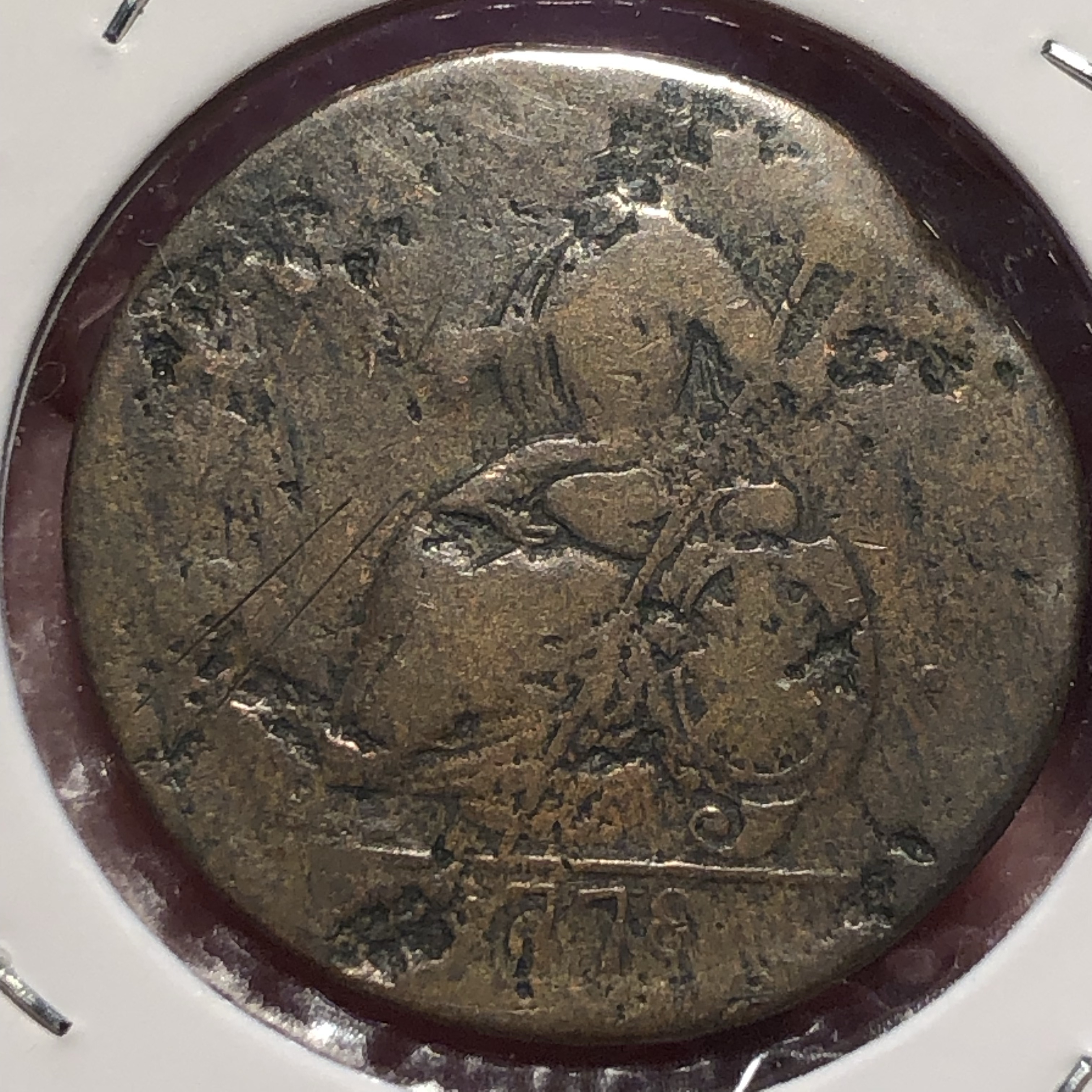Emergency coinage in US during revolutionary times?
I have 2 specimens that appears very similar to England 1/2 Penny George III (First Issue) minted in 1770-1775
https://en.numista.com/catalogue/pieces5335.html
However, my specimens are 1776 and 1778. Somewhere (I do not recall where), I read that some emergency coinage was minted in the US due to a shortage during the revolutionary war. Can anyone verify? If true, could these specimens be part of such an effort and did the US use some unofficial British coinage designs in the early years?




Thanks in advance for shedding any light on this mystery!
Tagged:
2
Comments
I think what you have are a 1776 & 1778 1/2p George III Machin Mills Colonial Copper. Do not have much info other than even in this condition, the 1776 is worth well more than the 1778. Do not collect these so no books available to me. Here is an article on the coins behalf by NGC. Good luck.
Jim
New York's Machin copper counterfeit coins
Many of the copper coins in circulation during the 1780s-90s were counterfeits made at a site called Machin's Mills near Newburgh, New York. Thomas Machin and his partners made a specialty of producing fakes of whatever copper coins were being most widely accepted at the time.
Since the popularity of each issue varied from one year to the next, he even overstruck the designs of one coin type on existing coins of another type to take advantage of this shifting favor! Machin's pieces were omnipresent in the late 1780s and helped to bring about a sharp reduction in value for all copper coins then circulating. Today, they are highly sought by collectors as historic relics.
When a man who is honestly mistaken hears the truth, he will either quit being mistaken or cease to be honest....Abraham Lincoln
Patriotism is supporting your country all the time, and your government when it deserves it.....Mark Twain
Many counterfeits were imported as well. Lots of history surrounding early coppers. Worth some research.
Not much coinage going on in the US at the time of the revolution, they relied heavily on the Continental Currency notes.
The 1778 is one of the Machin's Mills or Atlee counterfeits made in America in the 1780's. The other, probably 1775 they used a weird 5, is one of the British counterfeits that were so prevalent in the 1780's. There are avid collectors of both, so they would both have some value.
You have two Machin’s Mills halfpence. Your 1776 is known as a Vlack 9-76B small date. Eric Newman wrote a fabulous article highlighting this particular coin and its tie in to Vermont coppers in 1958. You should be able to find it on the Newman Portal. It’s considered to be a high rarity-6 variety. Congrats on a great coin!
Absolutely correct, I apologize for my incorrect information, that should teach me for making a judgement from pictures on my small phone!
No worries!
Such great information, guys! Thanks! I'll have to read the Newman article to get the full scoop. Awesome history behind these specimens.
I found the article by Newman here...
https://archive.org/details/arecentlydiscove1958newm/mode/1up
I have not read it yet, but did skim the correspondence surrounding the writing of the article. The letters back and forth for over a year certainly makes us appreciate the internet and email.
Given the rarity, these coins might be considerably more valuable than I first thought.
Fascinating 1958 article by Eric Newman on the "Vermont Numistmatic Enigma". It documents the mystery of how some Vermont Coppers had the British Union Jack in the reverse shield and George III on the obverse despite VT state laws restricting it. It appears the 1776 and 1778 coins were actually minted a bit later using older dies.
I found a great web page to help understand Eric Newman's references to various obverse/reverse combinations and the derivation of the final production...
https://avaluer.net/explore/22564709-a_visual_guide_to_identification_of_machins_mills_halfpence
I also discovered a helpful resource on the various releases from Machin's Mills...
https://learn.apmex.com/coin-guide/guide-to-territorial-values/new-york-machins-mills-1747-1788
Based on all research to date, I believe @Colonialcoin is absolutely correct... I have a rare specimen from Machin's Mills Vlack 9-76B small date. However, I'm still a bit confused by the nomenclature. What is "Vlack"? What is the "W" number I often see with the identification, grade perhaps?
I'd like to have the 1776 coin certified by a trusted authority. Does it make sense to send this to NGC to examine and certify? I have never had a coin certified. What submission options should I choose for this coin? It's a bit confusing to read through the options, some of which depend on the coin value which has yet to be determined. The total fees appear pretty daunting, only possible for very valuable submissions.
https://www.ngccoin.com/submit/services-fees/ngc/
NOTE: I chose NGC over PCGS as I have 2 American coins and 2 World Coins that I would like to have certified. Somewhere I read that NGC is a better choice for world coins. Is there a good reason to send separate submissions?
I am going to guess you don't know who's web-site you are at. Good luck and God bless. James
Hi James, I know exactly on which website I'm posting. Have you followed the conversation? Turns out I have an uber-rare colonial coin that I'd like to get certified. Not sure I understand your post.
Ah, is collectors.com owned or operated by PCGS? The links at the top appear to only include PCGS. That would explain.
What would you be looking to gain by having it certified? It's a very desirable coin, if you're sure of the attribution I'd leave it raw, but that's just me. Can you post pictures? I'd love to see it!
@lcutler It's the first coin at the top of this thread Vlack 9-76b small date...
Great question. Given it's likely value, I'm considering selling it to fund other things. Thus, I'm exploring the process and associated costs. I assumed I would need to have it certified and slabbed in preparation for sale or auction. I'm looking at the certification via PCGS and Heritage Auction for consignment. Won't buyers need that third party certification assurance?
Is it really possible to keep the coin in a 2x2 and get good value via ebay buy-it-now or reserved auction? It would surely save a bzillion dollars and weeks/months of process time. I can see that the auction houses likely provide some marketing support to raise awareness that the coin is on the market, etc. It would also be a real auction rather than an ebay auction which I've never found effective, but a game of last minute bids to beat the clock.
I have to figure out the best process as I have another world coin potentially worth much much more!
Thanks for your guidance! I really appreciate it!